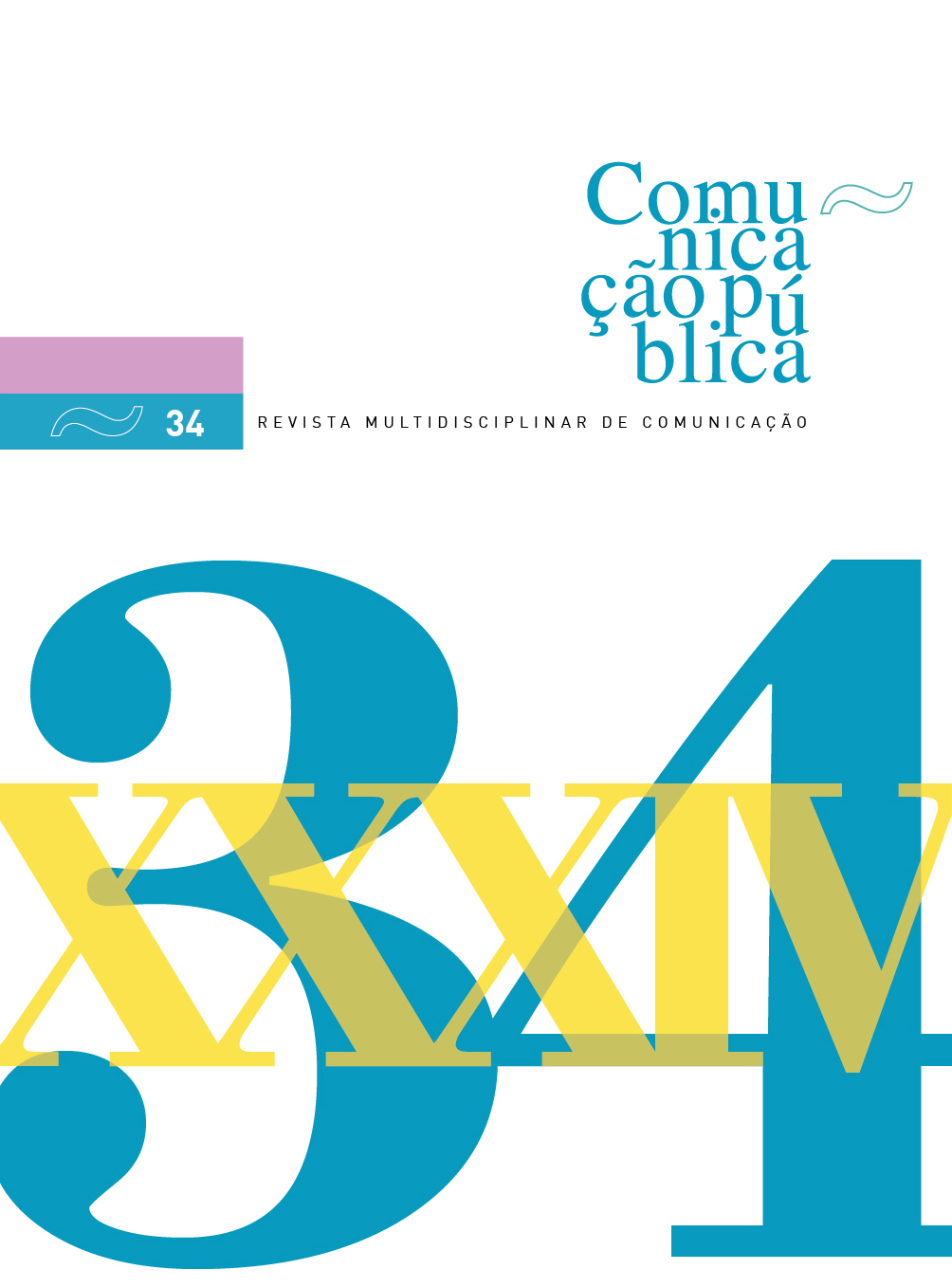The importance of olfactory marketing in fashion brands
the Abercrombie & Fitch case
DOI:
https://doi.org/10.34629/cpublica.734Keywords:
Abercrombie & Fitch, brand building, shopping experience fashion brandsAbstract
The use of olfactory appeals, with the aim of awakening sensations and creating emotional brand-consumer relationships is not new. With it, brands intend to position themselves in the minds of consumers in a direct and pleasant way. This article seeks to understand the importance of olfactory marketing for fashion brands, based on the Case Study of the brand Abercrombie & Fitch.
To this end, five exploratory interviews were carried out to try to understand consumers' understanding of A&F, and the impact of olfactory marketing on the shopping experience and brand perception, and a questionnaire survey with 315 validated responses, to answer the question and validate the research hypotheses.
97% of respondents recognized that the scent influences their sense of belonging to the brand and that there is a strong scent-brand association, corroborating previous studies that prove the impact of scent marketing as an effective strategy, regarding efficient and memorable communication about your values and personality.
Downloads
References
Acevedo, C., & Fairbanks, V. (2018). Os efeitos do Marketing Sensorial sobre a experiência de compra do consumidor no ponto de venda. RIMAR – Revista Interdisciplinar de Marketing, UEM, 8(1), 51-67. https://doi.org/10.4025/rimar.v8i1.34590.
Avilés, J., & Calle, D. (2015). Evaluación y aplicación cualitativa de la influencia de los estímulos olfativos en el consumidor, en el periodo 2014 (Master’s thesis, Universidad de Cuenca). Retrieved from http://dspace.ucuenca.edu.ec/handle/123456789/21230.
Batey, M. (2010). O significado da marca: como as marcas ganham vida na mente dos consumidores. Rio de Janeiro: Best Business.
Brakus, J., Schmitt, B., & Zarantonello, L. (2009). Brand experience: What Is It? How Is It Measured? Does It Affect Loyalty? Journal of Marketing, 73(3), 52-68. https://doi.org/10.1509/jmkg.73.3.52
Cachero-Martínez & Vazquez, R. (2017). Living Positive Experience in Store: How it Influences Shopping Experience Value and Satisfaction? Journal of Business Economics and Management, 18 (3), 537-553. https://doi.org/10.3846/16111699.2017.1292311.
Carlsen, T. (2011). Marketing Boca a Boca: Funcionamento e Implicações. São Paulo: Insper Instituto de Ensino e Pesquisa - Faculdade de Economia e Administração. Retrieved from https://repositorio.insper.edu.br/handle/11224/540?locale=pt_BR
Carmona, C.; Pacheco, C. & Zapata, J. (2013). Marketing sensorial como herramienta para captar y satisfacer al cliente (Master’s thesis, Universidad del Rosario, Colombia). http://repository.urosario.edu.co/handle/10336/4275.
Chen, S.-L. & Bowen, J. T. (2001). The relationship between customer loyalty and customer satisfaction. International Journal of Contemporary Hospitality Management, 13(5), 213- 217. https://doi.org/10.1108/09596110110395893.
Deabler, A. (2020). Abercrombie & Fitch launches new ad campaign focusing on ‘body positivity,’ inclusivity. Fox News. Retrieved from: https://www.foxnews.com/lifestyle/abercrombie-fitch-launches-campaign-body-positivity-inclusivity.
Ditoiu, M. & Cäruntu, A. (2014). Sensory Experiences Regarding Five-dimensional Brand Destination. Procedia Social and Behavioral Sciences, 109, 301-306. https://doi.org/10.1016/j.sbspro.2013.12.461.
Doucé, L. & Janssens, W. (2013). The Presence of a Pleasant Ambient Scent in a Fashion Store: The Moderating Role of Shopping Motivation and Affect Intensity. Environment and Behavior, 45 (2), 215-238. https://doi.org/10.1177/0013916511410421
Elliot, A. J., Maier, M. A., Moller, A. C., Friedman, R., & Meinhardt, J. (2007). Color and psychological functioning: the effect of red on performance attainment. Journal of experimental psychology: General, 136(1), 154. https://doi.org/10.1037/0096-3445.136.1.154.
Estanyol, E. (2014). Marketing sensorial: comunicación a través de los sentidos. Retrieved from: http://comein.uoc.edu/divulgacio/comein/es/numero38/articles/Article-Elisenda-Estanyol.html
Ferdenzi, C., Delplanque, S., Barbosa, P., Court, K., Guinardo, J., Guo, T., Granjean, D. (2013). Affective semantic space of scents. Towards a universal scale to measure self-reported odor-related feelings. Food Quality and Preference, 30, 128-138. https://doi.org/10.1016/j.foodqual.2013.04.010.
Fernandez, C. (27 de Julho de 2016). Abercrombie& Fitch's rebrand continues with first campaign from new creative director. Fashionista. Retrieved from https://fashionista.com/2016/07/abercrombie-fitch-denim-campaign-2016.
Green, D. & Baldwin, S. (2019). How Abercrombie & Fitch lost teens. CNBC. Retrieved from https://www.cnbc.com/video/2019/10/16/abercrombie-and-fitch-hollister-rebranded-itself-after-mike-jeffries-controversy.html.
Holbrook, M. & Hirschman, E. (1982). The Experiential Aspects of Consumption: Consumer Fantasies, Feelings, and Fun. Journal of Consumer Research, 9, 132–141. Retrieved from: https://pdfs.semanticscholar.org/af9b/5cebe8134185523b0db52a521f8b979602c7.pdf?_ga=2.43037152.41101162.1611055576-658462719.1611055576.
Hultén, B. (2009). Sensory marketing: the multi-sensory brand-experience concept. European Business Review, 23(3), 256–273. https://doi.org/10.1108/09555341111130245
Hultén, C. (2001). Total Factor Productivity. A Short Biography, in C. Hultén, New Developments in Productivity Analysis (pp. 1-54). University of Chicago Press. https://doi.org/10.7208/chicago/9780226360645.003.0001
Lewis, R & Dart, M. (2010). The new rules of retail – Competing in the world’s toughest marketplace. Choice Reviews Online, 48 (9), 48-5. https://doi.org/10.5860/choice.48-5185
Leyton, E. Yagual, A. (2015). Análisis del Marketing Olfativo como estrategia de promoción utilizada para influir en la decisión de compra en la tienda de ropa EPK en el Centro comercial Mall del Sol (Master’s thesis, Universidad Politécnica Salesiana). Retrieved from https://dspace.ups.edu.ec/handle/123456789/9039.
Lindstrom, M. (2013). Brand Sense. Gestão Plus.
Martin-Fuller, L. (8 de Maio de 2017). Abercrombie & Fitch Rebranding Efforts. Issuu. Retrieved from https://issuu.com/lottimartin-fuller/docs/final_a_b_doc.
Orso, N., Trevisol, M., & Santos, S. (2011). O neuromarketing e as suas aplicações no campo da comunicação publicitária. Iniciacom, Revista brasileira de iniciação científica em Comunicação Social, 3(2). Retrieved from https://revistas.intercom.org.br/index.php/iniciacom/article/view/682.
Palmieri, J. (2019). Abercrombie & Fitch’s New Ads Address Overcoming Adversity. WWD. Retrieved from: https://wwd.com/business-news/media/abercrombie-fitchs-new-ads-address-overcoming-adversity-1202992253/.
Rodrigues, C., Hultén, C. & Brito, B. (2011). Sensorial brand strategies for value co-creation. Innovative Marketing, 7(2). Retrieved from https://www.researchgate.net/publication/265626105_Sensorial_brand_strategies_for_value_co-creation.
Rodrigues, M. (2014). Consumo e Expressão Marcária na Pós-Modernidade: Estudo da marca Abercrombie & Fitch (Master’s thesis, Universidade de São Paulo- Escola de Comunicação e Artes). Retrieved from http://www.teses.usp.br/teses/disponiveis/27/27153/tde-13112014-113706/.
Semprini, A. (2006). A Marca Pós-Moderna: Poder e Fragilidade da Marca na Sociedade Contemporânea. São Paulo: Estação das Letras.
Silva, M. & Oliveira, V. (2019). O Boca a boca: As conversações e a voz do consumidor nas redes sociais virtuais- Estudo de Caso da Marca Abercrombie. Animus- Revista Interamericana de Comunicação Midiática, 18 (38). https://doi.org/10.5902/2175497732995.
Suárez, M. & Gumiel., C. (2012). Marketing sensorial. Distribución y Consumo, 22 (122), 30- 40
Townsend, A. (2010). Perfume Protest: Teens Storm ‘Toxic’ Abercrombie & Fitch. Time magazine. Retrieved from: https://newsfeed.time.com/2010/10/04/perfume-protest-teens-strom-%E2%80%98toxic%E2%80%99-abercrombie-fitch/.
Turley, L. & Milliman, R. (2000). Atmospheric Effects on Shopping Behavior: A Review of the Experimental Evidence. Journal of Business Research, 49 (2), 193–211. https://doi.org/10.1016/s0148-2963(99)00010-7
Downloads
Published
Issue
Section
License
Copyright (c) 2023 Direitos do Autor (c) 2023

This work is licensed under a Creative Commons Attribution-NonCommercial 4.0 International License.
Os conteúdos da Comunicação Pública estão licenciados com uma licença Creative Commons - Atribuição-NãoComercial 4.0 Internacional.


